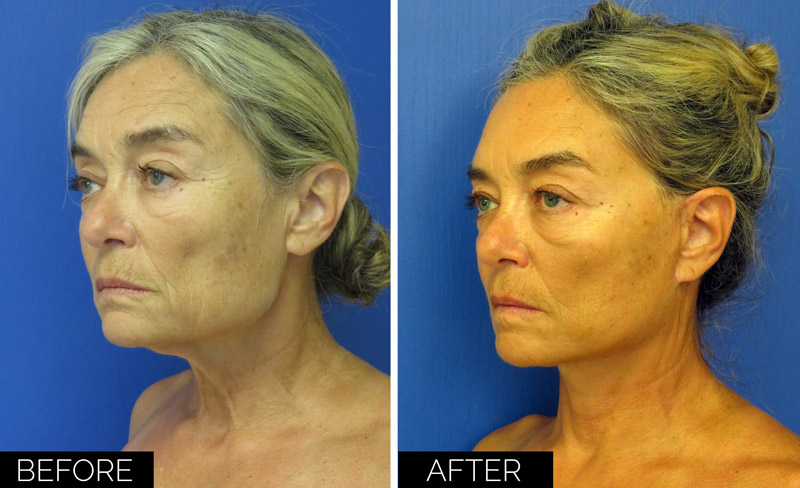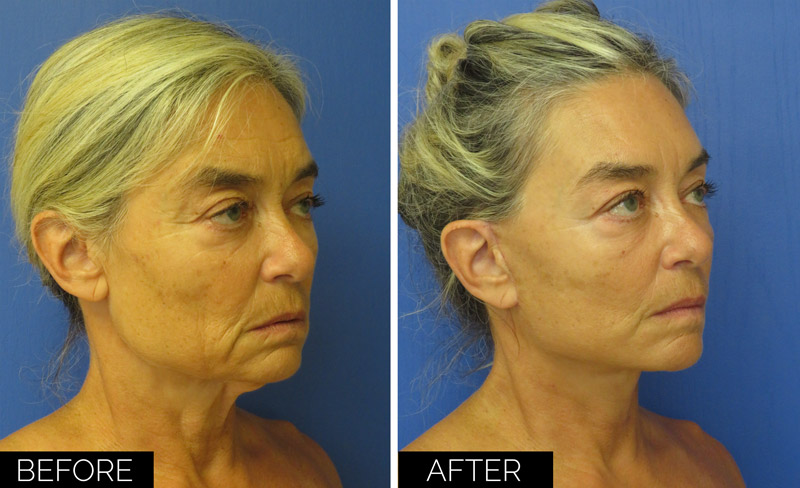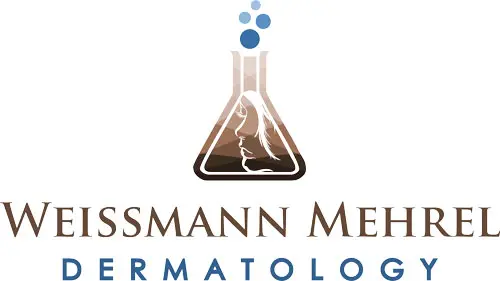Surgical Dermatology
At Weissmann Mehrel Dermatology, we provide our patients with the highest quality surgical management and care of skin conditions.
Mohs Micrographic Skin Cancer Surgery
Mohs surgery is performed on an outpatient basis in your doctor’s office. It may be performed by a team of highly trained specialists who each focus on different parts of treatment, or one experienced Mohs surgeon well-equipped to perform the entire procedure. During the Mohs surgery procedure, the affected area is numbed with a local anesthetic. Small layers of skin are removed and then the area is closely examined to see if the cancer has been thoroughly eradicated. This process significantly reduces damage to surrounding tissue while effectively removing all traces of cancer.
Most Mohs procedures can be performed in three or less stages, which usually takes less than four hours to perform. Some cases may take longer, as there is no way of predicting the extent of cancer growth before treatment begins. Patients should arrange for someone to take them home following surgery.
Recovery & Results from Mohs Surgery
After Mohs surgery, patients may experience mild discomfort, bruising and swelling around the treated area. Prescription pain medication is available for patients if needed, although most only require Tylenol for pain relief.
There will be scarring after Mohs surgery once the area is healed, although the scars from this procedure are often smaller than those from other excision procedures. For patients concerned with the appearance of their skin after treatment, reconstructive procedures are available to reduce or even eliminate the appearance of the scar using skin flaps, skin grafts, collagen injections and more. These procedures may be performed at the same time as Mohs surgery or at a later date. Your surgeon may also utilize certain techniques to reduce visual scarring, including placing stitching in the skin’s natural crevices or out-of-sight areas.
Compared to other skin cancer treatments, Mohs Surgery has a very high success rate. Basal cell carcinomas have a 97-99 percent cure rate, while squamous cell carcinomas are cured 94 percent of the time.
Risks of Mohs Surgery
Although Mohs surgery is considered safe for most patients, there are certain risks involved with any type of surgical procedure. Some of these risks may include numbness, muscle weakness, tenderness, itching, pain and failure of skin grafts. These risks are considered rare and, if they do occur, are usually mild and temporary. Patients can reduce the risk of complications by choosing an experienced Mohs surgeon to perform their treatment, and by following the surgeon’s instructions after the procedure.
Dr. Weissmann is a certified fellow of the American Society of Mohs Micrographic Surgery and perform Mohs surgery.
Excisional Surgery for Skin Cancer
Excision surgery can be used to treat melanoma and non-melanoma. Skin cancer excision surgery is also called “wide excision.” This is because the tumor is cut out together with some of the healthy skin around it. The healthy skin is called a margin. The reason for taking a margin is to remove any cancer cells that have spread into the surrounding tissue.
The complexity of the excision depends on the tumor type, size, and location. The simplest and most common way to excise a tumor is a technique called elliptical excision. Skin cancer excision surgery and repair are more complicated for tumors on the scalp, foot, or other tricky places. After a tumor is excised, a pathologist will study the tissue that was removed. This is done to be certain that all the cancer cells are gone.
Removal of Moles & Benign Growths
Moles and other birthmarks are benign pigmented spots or patches of skin that range in color from tan, brown and black (moles) to red, pink or purple (vascular lesions, such as strawberry hemangiomas or port wine stains). Though most birthmarks are harmless, they may develop into cancer. Moles exhibiting any of the following warning signs should be examined by a professional immediately:
- Larger than six millimeters.
- Itches or bleeds.
- Rapidly changes in color, size or shape.
- Has multiple colors.
- Is located where it can’t be easily monitored, such as on the scalp.
Depending on their depth, location and color, as well as the patient’s skin type, age and other factors, treatment for benign but unattractive birthmarks may take the form of laser or pulsed light therapy, microdermabrasion or surgical excision.
Tumescent Liposuction
Tumescent liposuction is one of the most commonly performed liposuction techniques, and is especially beneficial for patients who want to get rid of stubborn, excess fat in a specific area. Compared to other types of liposuction, tumescent liposuction is considered to be a safer and simpler procedure, as it typically only requires local anesthetic and few small incisions.
The tumescent liposuction procedure is different from others because it involves injecting a fluid solution into the treatment area. This solution usually contains saline, lidocaine, and epinephrine, and helps to constrict blood vessels so that the targeted fat is easier to remove. Once the tumescent fluid has been injected, a cannula – which is a straw-like tube – is inserted into the treatment area and is used to suction out the excess fat. The cannula offers greater accuracy for the liposuction surgeon and because the blood vessels are constricted, blood loss is negligible. This helps reduce post-operative swelling and bruising, promoting quicker healing and recovery. Plus, because only small incisions are needed, scarring is minimal.
S-Lift Procedure
Your face provides the world with a lasting impression of who you are and how you feel. But it doesn’t have to tell your age. For many of our patients, the “wind-tunnel” look caused by overly taut skin following a facelift is no longer acceptable. They desire a more “natural looking” rejuvenation that does not “scream facelift.” Many patients today are looking for facelifts that allow for faster recovery, involve smaller incisions and no hair loss, and yield non-surgical looking results.
The S-Lift is a hidden-scar facelift procedure designed to rejuvenate the neck, jowls and face. Compared to traditional facelifts, it is a less invasive operation, with fewer complications and faster recovery. The S-Lift is particularly well suited for younger and middle-aged patients and can make a dramatic change by tightening the sagging muscles and skin of the cheeks, chin, and neck. The best candidates for an S-Lift are men and women who:
- Have firm, elastic skin and are in good health.
- Are typically between 40 and 70 years of age.
- Have mild to moderate lower facial and/or neck laxity.
- Have realistic expectations.
- Want to look as young as they feel.
The Procedure
An S-Lift procedure is performed in our offices. An S-Lift is performed in strict local anesthesia, using a special anesthetic solution, which is injected in the area forward of the ears. This fluid gently lifts the skin from the underlying tissue. Operating on one side of your face at a time, Dr. Weissmann excise a narrow “S” shaped section of skin from the area forward of your ear. The skin is lifted and tightened. The doctors also reposition the underlying muscles and tissues. Excess fat is removed. The opening is closed using fine sutures. The procedure normally takes less than 2 hours.
Recovery
After your procedure, you will go home and rest for at least 24 hours. There may be some minor bruising and swelling for several days. You will wear a small bandage over the incision site for the next 2 – 3 days. Mild pain relievers are used. After 2-3 days you may take a shower and wash your hair. Men may shave their face. Sutures will be removed after 6 – 7 days. Direct sun should be avoided for several weeks. Most of our S-Lift patients resume normal activities after 4 – 5 days.
Expected Results
Following surgery, the normal aging process resumes. Your lifestyle choices, bone structure, skin type, sun exposure and heredity all play a part in determining how many years can be removed by an S-Lift and for how long. In general, younger patients enjoy longer-lasting results. The real advantage is that patients achieve natural results and look rejuvenated, not operated.
Before & After S-Lift Procedure


